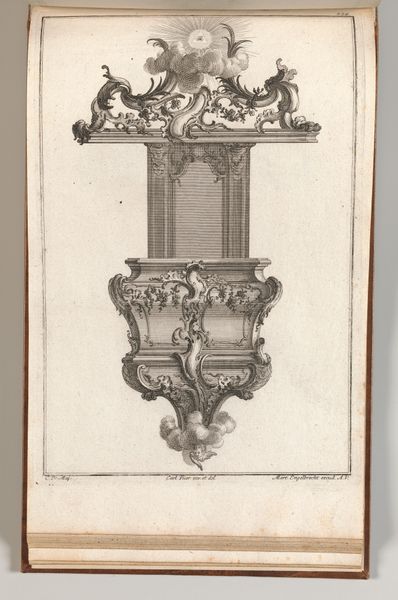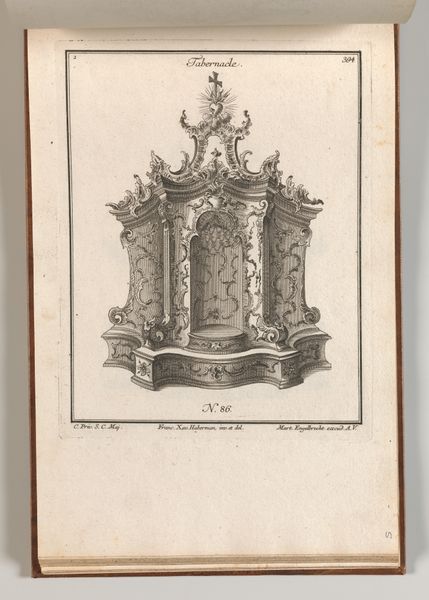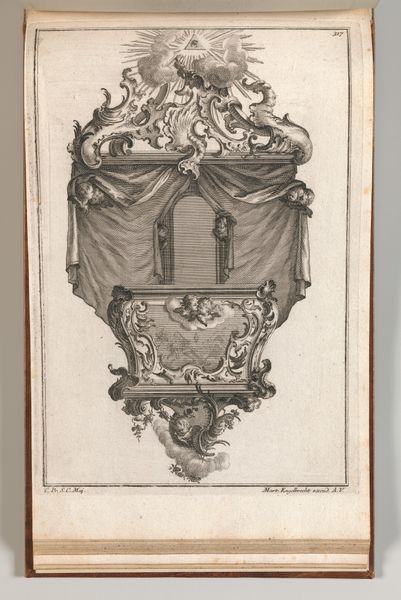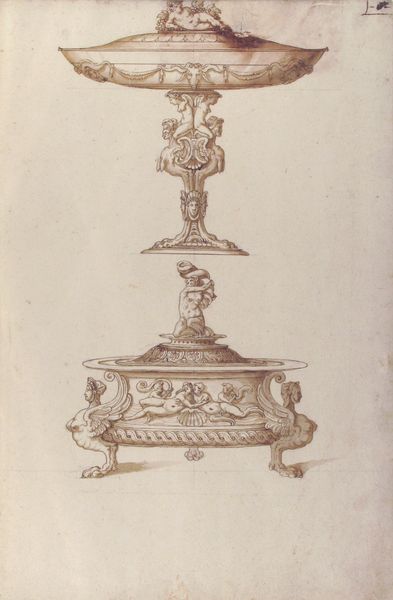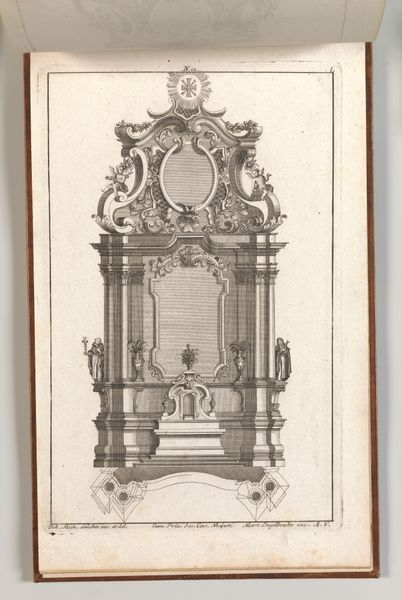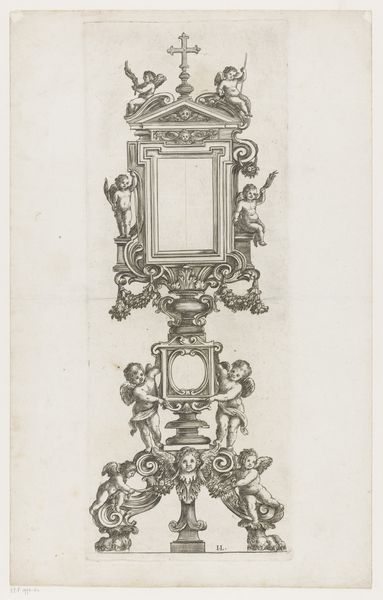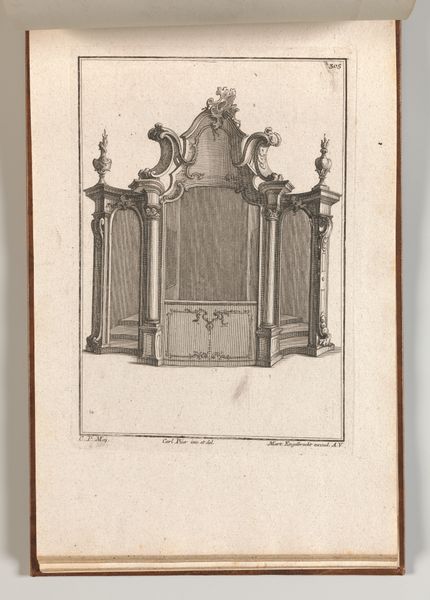
Design for a Pulpit, Plate 3 from an Untitled Series of Pulpit Designs 1745 - 1755
0:00
0:00
drawing, print, engraving, architecture
#
drawing
#
baroque
# print
#
decorative-art
#
engraving
#
architecture
Dimensions: Overall: 8 7/16 × 13 3/4 in. (21.5 × 35 cm)
Copyright: Public Domain
Curator: Goodness, what an incredibly detailed and rather whimsical design. I'd say it's got a lot of pomp without circumstance! Editor: Indeed. Today, we’re observing "Design for a Pulpit, Plate 3 from an Untitled Series of Pulpit Designs" crafted between 1745 and 1755 by Martin Engelbrecht. It's an engraving that resides here at the Metropolitan Museum of Art. Curator: You know, it reminds me of those extravagant pastries you see in bakery windows, almost too beautiful to eat. All those flourishes and swirls. Makes you wonder what kind of sermons were delivered from such a platform, doesn't it? Editor: Observe the intricate symmetry—a clear demonstration of Baroque principles. The vertical composition divides into distinct registers, each adorned with meticulously rendered ornament. It exemplifies structure through lavish detail. Consider the theological intent; it strives to represent spiritual elevation and awe through design, achieved via hierarchical distribution of symbolic forms. Curator: Hierarchical for sure! Look at those cherubs perched at the top, practically tumbling over each other! It's theatrical, in a way, demanding attention. You'd almost expect the preacher to burst into song mid-sermon! Editor: That overt theatricality serves a very definite purpose. Think of Baroque aesthetics as persuasive visual rhetoric. Note how light is implied through varied hatching techniques to illuminate key sections. This directs the observer’s eye strategically and thus facilitates specific interpretations. Curator: It certainly sparks a lot of ideas... imagine commissioning this! What kind of statement it must have been back then? The artist’s precision, though, in etching all those curves is just jaw-dropping. Editor: Martin Engelbrecht uses these architectural renderings to engage philosophical thought about how design may reflect power dynamics and spiritual aspiration within spaces of worship. Curator: Power and aspiration… absolutely! I'd love to travel back and listen to how it felt in those congregations and see it in real life. What it would mean. Editor: Each meticulously crafted element adds layers of semiotic complexity to understanding this baroque aesthetic. It shows an incredible relationship with theology through structure and shape.
Comments
No comments
Be the first to comment and join the conversation on the ultimate creative platform.



